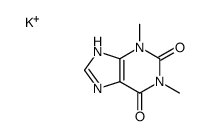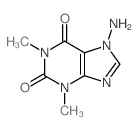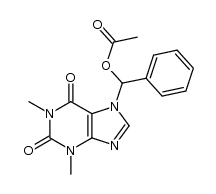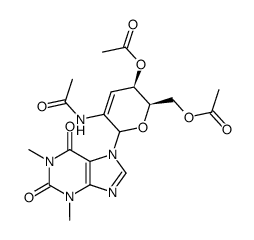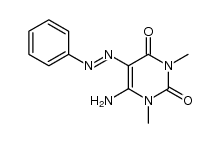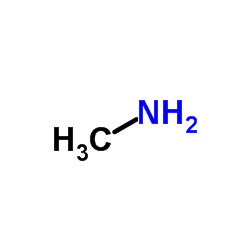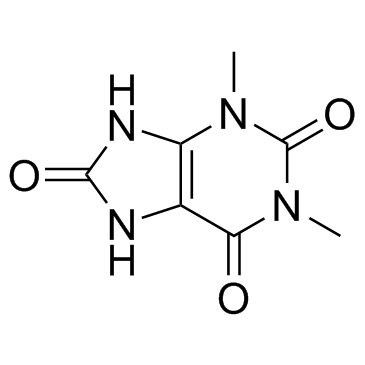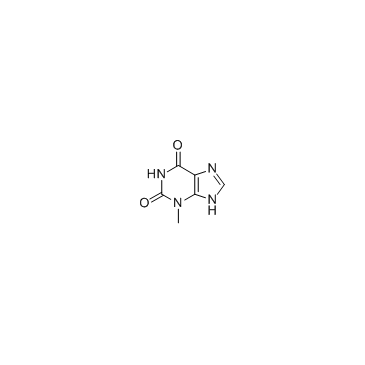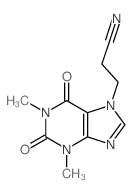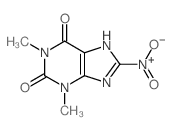58-55-9
| 品牌 | 规格 | 纯度 | 市场价 | 会员价 | 操作 | |
|---|---|---|---|---|---|---|
 索莱宝 索莱宝 | 1ml | - | ¥360.00 | ¥288.00 | 购买 | |
| 索莱宝 | 1ml | - | ¥360.00 | ¥288.00 | 购买 | |
| TargetMol | 1ml | 99.65%;1 mL * 10 mM (in DMSO) | ¥418.00 | ¥334.00 | 购买 | |
| *如对价格、规格等有其他特殊要求,请联系线上客服查看全部规格 > | ||||||
| 中文名 | 茶碱 |
|---|---|
| 英文名 | theophylline |
| 中文别名 |
2,6-二氧-1,3-二甲基嘌呤
1,3-二甲基-3,7-二氢-1H-嘌呤-2,6-二酮 1,3-二甲基黄嘌呤 无水茶碱 |
| 英文别名 |
Xanthium
LABID Elixex Theotard duraphy MFCD00079619 Theolair 1H-Purine-2,6-dione, 3,7-dihydro-1,3-dimethyl- Slo-PhyllinTM Theoclear Teonova Theon [13C]-Theophyllin Egifilin X 115 Cetraphylline Duraphyllin Adisne Theobid Teosona 1,3-Dimethylxanthine Theophylline 1,3-Dimethyl-3,7-dihydro-1H-purine-2,6-dione Etheophyl Euphylong austyn Diffumal Nuelin Talotren Theodel Solosin Elixophyllin Pulmidur Theoplus Afonilum Pulmo-Timelets [14C]-Theophyllin Diphyllin (VAN) LASMA Physpan Unifyl 3,7-dihydro-1,3-dimethyl-1H-purine-2,6-dione Bronchoretard accurb Slo-Phyllin EINECS 200-385-7 Theal Theona P Euphylline Bilordyl unidur 1,3-Dimethylpurine-2,6(1H,3H)-dione Uniphyl Theodrip [3H]-Theophyllin UNIPHYLLIN asmax Aerolate |
| 描述 | Theophylline是非选择性的磷酸二酯酶 (PDE)抑制剂,腺苷受体阻断剂,和组蛋白脱乙酰酶 (HDAC)活化剂。 |
|---|---|
| 相关类别 | |
| 靶点 |
Human Endogenous Metabolite |
| 参考文献 |
| 密度 | 1.5±0.1 g/cm3 |
|---|---|
| 沸点 | 454.1±37.0 °C at 760 mmHg |
| 熔点 | 271-273 °C |
| 分子式 | C7H8N4O2 |
| 分子量 | 180.164 |
| 闪点 | 228.4±26.5 °C |
| 精确质量 | 180.064728 |
| PSA | 72.68000 |
| LogP | -0.17 |
| 外观性状 | 白色至灰白色结晶粉末 |
| 蒸汽压 | 0.0±1.1 mmHg at 25°C |
| 折射率 | 1.620 |
| 储存条件 | 本品应密封于阴凉干燥处避光保存。 |
| 稳定性 | Stable. Incompatible with strong oxidizing agents. |
| 水溶解性 | 8.3 g/L (20 ºC) |
| 分子结构 | 1、 摩尔折射率:43.14 2、 摩尔体积(m3/mol):122.9 3、 等张比容(90.2K):352.4 4、 表面张力(dyne/cm):67.6 5、 极化率(10<st1:chmetcnv tcsc="0" numbertype="1" negative="Tru |
| 计算化学 | 1.疏水参数计算参考值(XlogP):无 2.氢键供体数量:1 3.氢键受体数量:3 4.可旋转化学键数量:0 5.互变异构体数量:4 6.拓扑分子极性表面积69.3 7.重原子数量:13 8.表面电荷:0 9.复杂度:267 10.同位素原子数量:0 11.确定原子立构中心数量:0 12.不确定原子立构中心数量:0 13.确定化学键立构中心数量:0 14.不确定化学键立构中心数量:0 15.共价键单元数量:1 |
| 更多 | 1. 性状:白色结晶。无气味。味苦。 2. 密度(g/mL,25/4℃): 未确定 3. 相对蒸汽密度(g/mL,空气=1):未确定 4. 熔点(ºC):270~274℃(一水合物) 5. 沸点(ºC,常压):未确定 6. 沸点(ºC,5.2kPa):未确定 7. 折射率:未确定 8. 闪点(ºC):未确定 9. 比旋光度(º):未确定 10. 自燃点或引燃温度(ºC):未确定 11. 蒸气压(kPa,25ºC):未确定 12. 饱和蒸气压(kPa,60ºC):未确定 13. 燃烧热(KJ/mol):未确定 14. 临界温度(ºC):未确定 15. 临界压力(KPa):未确定 16. 油水(辛醇/水)分配系数的对数值:未确定 17. 爆炸上限(%,V/V):未确定 18. 爆炸下限(%,V/V):未确定 19. 溶解性:1g产品溶于120ml水、80ml乙醇、约110ml氯仿,溶于热水、氢氧化碱溶液、氨水、稀盐酸和稀硝酸,微溶于乙醚。 |
Synonym:1,3-Dimethylxanthine; 3,7-Dihydro-1,3-Dimethyl-1H-Purine-2,6-Dione; 1,3-Dimethyl-2,6-Dioxo-1,2,3,6-Tetrahydropurin Section 2 - COMPOSITION, INFORMATION ON INGREDIENTS
Risk Phrases: 22 Section 3 - HAZARDS IDENTIFICATION EMERGENCY OVERVIEW
Harmful if swallowed.The toxicological properties of this material have not been fully investigated. Potential Health Effects Eye: May cause eye irritation. The toxicological properties of this material have not been fully investigated. Skin: May cause skin irritation. The toxicological properties of this material have not been fully investigated. Ingestion: Harmful if swallowed. May cause irritation of the digestive tract. May cause headache, nausea, fatigue, and dizziness. Inhalation: May cause respiratory tract irritation. The toxicological properties of this substance have not been fully investigated. Chronic: No information found. Section 4 - FIRST AID MEASURES Eyes: Flush eyes with plenty of water for at least 15 minutes, occasionally lifting the upper and lower eyelids. Get medical aid. Skin: Get medical aid. Flush skin with plenty of water for at least 15 minutes while removing contaminated clothing and shoes. Wash clothing before reuse. Ingestion: Never give anything by mouth to an unconscious person. Get medical aid. Do NOT induce vomiting. If conscious and alert, rinse mouth and drink 2-4 cupfuls of milk or water. Inhalation: Remove from exposure and move to fresh air immediately. If not breathing, give artificial respiration. If breathing is difficult, give oxygen. Get medical aid. Notes to Physician: Section 5 - FIRE FIGHTING MEASURES General Information: As in any fire, wear a self-contained breathing apparatus in pressure-demand, MSHA/NIOSH (approved or equivalent), and full protective gear. During a fire, irritating and highly toxic gases may be generated by thermal decomposition or combustion. Extinguishing Media: Use agent most appropriate to extinguish fire. Use water spray, dry chemical, carbon dioxide, or appropriate foam. Section 6 - ACCIDENTAL RELEASE MEASURES General Information: Use proper personal protective equipment as indicated in Section 8. Spills/Leaks: Clean up spills immediately, observing precautions in the Protective Equipment section. Sweep up, then place into a suitable container for disposal. Avoid generating dusty conditions. Provide ventilation. Section 7 - HANDLING and STORAGE Handling: Wash thoroughly after handling. Remove contaminated clothing and wash before reuse. Use with adequate ventilation. Avoid contact with eyes, skin, and clothing. Keep container tightly closed. Avoid ingestion and inhalation. Storage: Keep container closed when not in use. Store in a tightly closed container. Store in a cool, dry, well-ventilated area away from incompatible substances. Section 8 - EXPOSURE CONTROLS, PERSONAL PROTECTION Engineering Controls: Use adequate ventilation to keep airborne concentrations low. Exposure Limits CAS# 58-55-9: Russia: 0.5 mg/m3 TWA Personal Protective Equipment Eyes: Wear appropriate protective eyeglasses or chemical safety goggles as described by OSHA's eye and face protection regulations in 29 CFR 1910.133 or European Standard EN166. Skin: Wear appropriate protective gloves to prevent skin exposure. Clothing: Wear appropriate protective clothing to prevent skin exposure. Respirators: Follow the OSHA respirator regulations found in 29 CFR 1910.134 or European Standard EN 149. Use a NIOSH/MSHA or European Standard EN 149 approved respirator if exposure limits are exceeded or if irritation or other symptoms are experienced. Section 9 - PHYSICAL AND CHEMICAL PROPERTIES Physical State: Powder Color: white Odor: None reported. pH: Not available. Vapor Pressure: Not available. Viscosity: Not available. Boiling Point: Not available. Freezing/Melting Point: 270.00 - 274.00 deg C Autoignition Temperature: Not available. Flash Point: Not available. Explosion Limits, lower: Not available. Explosion Limits, upper: Not available. Decomposition Temperature: Solubility in water: slightly soluble Specific Gravity/Density: Molecular Formula: C7H8N4O2 Molecular Weight: 180.17 Section 10 - STABILITY AND REACTIVITY Chemical Stability: Stable under normal temperatures and pressures. Conditions to Avoid: Incompatible materials, dust generation, excess heat, strong oxidants. Incompatibilities with Other Materials: Oxidizing agents. Hazardous Decomposition Products: Nitrogen oxides, carbon monoxide, irritating and toxic fumes and gases, carbon dioxide, nitrogen. Hazardous Polymerization: Has not been reported. Section 11 - TOXICOLOGICAL INFORMATION RTECS#: CAS# 58-55-9: XH3850000 LD50/LC50: CAS# 58-55-9: Oral, mouse: LD50 = 235 mg/kg; Oral, rabbit: LD50 = 350 mg/kg; Oral, rat: LD50 = 225 mg/kg. Carcinogenicity: Theophylline, Anhydrous - Not listed by ACGIH, IARC, or NTP. Other: See actual entry in RTECS for complete information. Section 12 - ECOLOGICAL INFORMATION Section 13 - DISPOSAL CONSIDERATIONS Dispose of in a manner consistent with federal, state, and local regulations. Section 14 - TRANSPORT INFORMATION IATA Not regulated as a hazardous material. IMO Not regulated as a hazardous material. RID/ADR Not regulated as a hazardous material. Section 15 - REGULATORY INFORMATION European/International Regulations European Labeling in Accordance with EC Directives Hazard Symbols: XN Risk Phrases: R 22 Harmful if swallowed. Safety Phrases: S 22 Do not breathe dust. S 24/25 Avoid contact with skin and eyes. S 28A After contact with skin, wash immediately with plenty of water. S 37 Wear suitable gloves. S 45 In case of accident or if you feel unwell, seek medical advice immediately (show the label where possible). WGK (Water Danger/Protection) CAS# 58-55-9: 2 Canada CAS# 58-55-9 is listed on Canada's DSL List. CAS# 58-55-9 is not listed on Canada's Ingredient Disclosure List. US FEDERAL TSCA CAS# 58-55-9 is listed on the TSCA inventory. SECTION 16 - ADDITIONAL INFORMATION N/A |
CHEMICAL IDENTIFICATION
HEALTH HAZARD DATAACUTE TOXICITY DATA
MUTATION DATA
|
| 符号 |

GHS06 |
|---|---|
| 信号词 | Danger |
| 危害声明 | H301 |
| 警示性声明 | P301 + P310 |
| 个人防护装备 | dust mask type N95 (US);Eyeshields;Faceshields;Gloves |
| 危害码 (欧洲) | Xn:Harmful |
| 风险声明 (欧洲) | R22 |
| 安全声明 (欧洲) | S7-S16-S36/37-S45 |
| 危险品运输编码 | UN 2811 6.1/PG 3 |
| WGK德国 | 1 |
| RTECS号 | XH3850000 |
| 包装等级 | III |
| 危险类别 | 6.1(b) |
| 海关编码 | 2939590000 |
~96% |
| 文献:BASF Aktiengesellschaft Patent: US4380631 A1, 1983 ; |
~93% |
| 文献:Kuz'menko, V. V.; Gulevskaya, A. V.; Pozharskii, A. F. Journal of Organic Chemistry USSR (English Translation), 1988 , p. 1373 - 1377 Zhurnal Organicheskoi Khimii, 1988 , vol. 24, # 7 p. 1524 - 1529 |
~% |
| 文献:US4380631 A1, ; |
| 海关编码 | 2939590000 |
|---|




